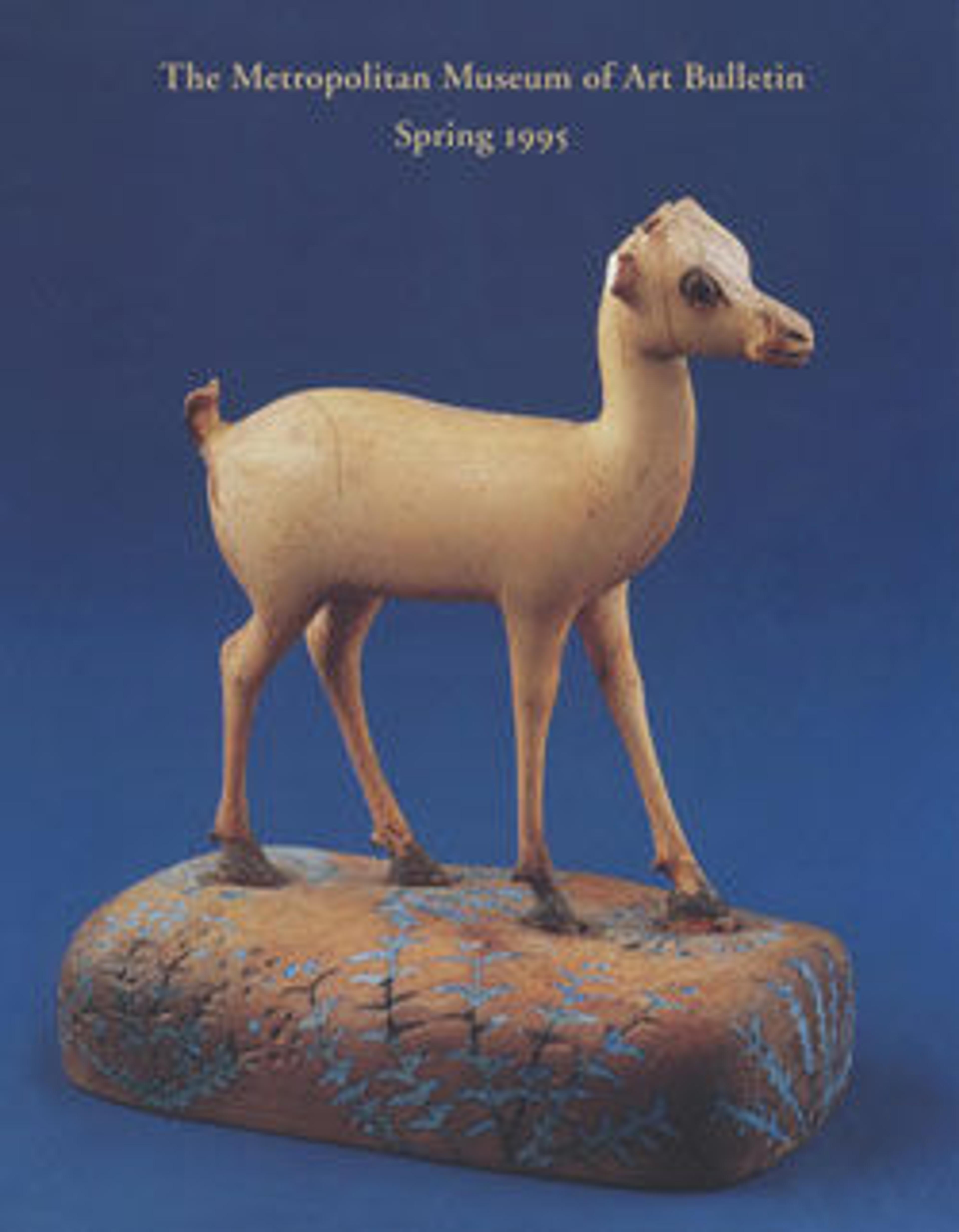Hippopotamus figurine
This statuette depicts a hippopotamus with its typical barrel-shaped body, short legs, and very large head. The high quality of the piece is apparent in the detailed depiction of the head that includes wonderful modeling of the area below the eyes and of the top of the snout.
Hippopotamus figurines made out of blue faience and without a base were popular in the Middle Kingdom and Second Intermediate Period and the piece here was originally dated to this time. However, a very similar hippopotamus statuette, which must have been an export from Egypt, has been found on the Greek island of Samos. The archeological context of the piece found in Greece dates it to the 8th to 6th century B.C. and a group of small hippopotamus statuettes on bases, and made out of a white material, likely belong to the same period.
It is tempting to see these small hippos figurines as connected to a festival for a hippo goddess called Hedjet, whose name has been translated as "The White One." However this translation has been questioned and traces of red paint have been found on depictions of the goddess. Intriguingly, the hippopotamus here, for which a white stone was chosen, was once painted as well, and traces of pigment seem to indicate that it was once blue. The reasons are unclear but might lie in the general positive symbolism of this color.
Hippopotamus figurines made out of blue faience and without a base were popular in the Middle Kingdom and Second Intermediate Period and the piece here was originally dated to this time. However, a very similar hippopotamus statuette, which must have been an export from Egypt, has been found on the Greek island of Samos. The archeological context of the piece found in Greece dates it to the 8th to 6th century B.C. and a group of small hippopotamus statuettes on bases, and made out of a white material, likely belong to the same period.
It is tempting to see these small hippos figurines as connected to a festival for a hippo goddess called Hedjet, whose name has been translated as "The White One." However this translation has been questioned and traces of red paint have been found on depictions of the goddess. Intriguingly, the hippopotamus here, for which a white stone was chosen, was once painted as well, and traces of pigment seem to indicate that it was once blue. The reasons are unclear but might lie in the general positive symbolism of this color.
Artwork Details
- Title: Hippopotamus figurine
- Period: Late Period
- Dynasty: Dynasty 25–26
- Date: 780–525 B.C.
- Geography: From Egypt
- Medium: Travertine (Egyptian alabaster)
- Dimensions: L. 8.2 cm (3 1/4 in.); W. 3.2 cm (1 1/4 in.); H. 4.3 cm (1 11/16 in.)
- Credit Line: Rogers Fund, 1920
- Object Number: 20.2.25
- Curatorial Department: Egyptian Art
More Artwork
Research Resources
The Met provides unparalleled resources for research and welcomes an international community of students and scholars. The Met's Open Access API is where creators and researchers can connect to the The Met collection. Open Access data and public domain images are available for unrestricted commercial and noncommercial use without permission or fee.
To request images under copyright and other restrictions, please use this Image Request form.
Feedback
We continue to research and examine historical and cultural context for objects in The Met collection. If you have comments or questions about this object record, please contact us using the form below. The Museum looks forward to receiving your comments.
